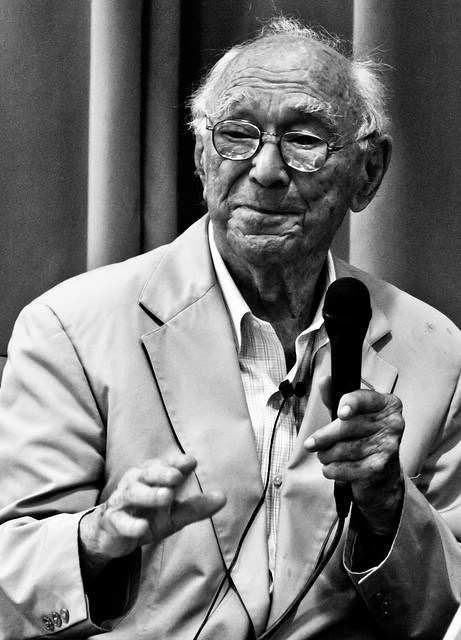Post by Learn Shack Team on Jan 10, 2014 12:36:53 GMT
A central tenant of Constructivism is that the learner is active in this process, and “learners, therefore, are not empty vessels waiting to be filled, but rather active organisms seeking meaning” (Driscoll, 2005 p. 387).

Jean Piaget (1896-1980)
Jean Piaget asserted that children learn actively through an exploration of their environment. Piaget’s learning theory looks through a developmental lens, and considers stages of knowledge acquisition to be directly linked to a child’s developmental stage (Piaget, 1968). Piaget’s work led to his theory of ‘genetic epistemology’, and has contributed greatly to the development of constructivist theory. Piaget’s concepts of assimilation, accommodation, and subsequent equilibration support the constructivist view that learning is constructed upon the existing schematic web of the learner.
www.marxists.org/reference/subject/philosophy/works/fr/piaget.htm

L.S. Vygotsky (1896-1934)
Vygotski is arguably the lead contributor to current understanding of constructivism. Not to negate cognitive and developmental theories that support constructivism, but Vygotskian theory articulates the importance of socialization to learning, and that in fact, higher order learning such as problem solving, proceeds social interaction (Driscoll, 2005). As social interaction occurs within a cultural context, we assume cultural importance to a social constructivist learning environment. Vygotsky’s support of the cognitive and developmental capability of a learner is synthesized in his Zone of Proximal Development (ZPD). We have come to understand that this zone is a stage of cognitive/developmental growth where a learner can be lead through scaffolding to accommodate new learning. There are many current applications of Vygotskian theory, including the grouping of multi-age learners where the role of teacher/learner is dynamic and shared.

Jerome Bruner (1915 ~)
Not to be shadowed by the work of Vygotsky, Jerome Bruner’s contribution to constructivist theory is significant, especially in the realm of discovery learning. Similar to Piaget’s developmental theory, Bruner suggests that a learner’s knowledge is represented in three stages; enactive, iconic, and symbolic. Unlike Piaget, these stages or realms of knowledge representation are not age dependent, thus it is assumed that a learner may be at any stage of learning. This idea provides credence to differentiated instruction, and to treating a classroom as a diverse learning community rather than one of a specific grade requiring a standard approach.
Having read about the pioneers on the constructivism strategy, please vote on which learning theory applies most to your own situation.
References
Driscoll. M.P. (2005). Psychology of Learning for Instruction (pp. 384-407; Ch. 11 – Constructivism). Toronto, ON: Pearson
Novak, J. D. (1998). Learning, Creating, and Using Knowledge: Concept Maps as Facilitative Tools in Schools and Corporations (pp. 49-78; ch 5 – Ausubel’s Assimilation Learning Theory). Mahwah, NJ: Erlbaum.
Piaget, J. (1968). Genetic Epistemology: A series of lectures delivered by Piaget at Columbia University, Published by Columbia University Press, translated by Eleanor Duckworth.

Jean Piaget (1896-1980)
Jean Piaget asserted that children learn actively through an exploration of their environment. Piaget’s learning theory looks through a developmental lens, and considers stages of knowledge acquisition to be directly linked to a child’s developmental stage (Piaget, 1968). Piaget’s work led to his theory of ‘genetic epistemology’, and has contributed greatly to the development of constructivist theory. Piaget’s concepts of assimilation, accommodation, and subsequent equilibration support the constructivist view that learning is constructed upon the existing schematic web of the learner.
www.marxists.org/reference/subject/philosophy/works/fr/piaget.htm

L.S. Vygotsky (1896-1934)
Vygotski is arguably the lead contributor to current understanding of constructivism. Not to negate cognitive and developmental theories that support constructivism, but Vygotskian theory articulates the importance of socialization to learning, and that in fact, higher order learning such as problem solving, proceeds social interaction (Driscoll, 2005). As social interaction occurs within a cultural context, we assume cultural importance to a social constructivist learning environment. Vygotsky’s support of the cognitive and developmental capability of a learner is synthesized in his Zone of Proximal Development (ZPD). We have come to understand that this zone is a stage of cognitive/developmental growth where a learner can be lead through scaffolding to accommodate new learning. There are many current applications of Vygotskian theory, including the grouping of multi-age learners where the role of teacher/learner is dynamic and shared.

Jerome Bruner (1915 ~)
Not to be shadowed by the work of Vygotsky, Jerome Bruner’s contribution to constructivist theory is significant, especially in the realm of discovery learning. Similar to Piaget’s developmental theory, Bruner suggests that a learner’s knowledge is represented in three stages; enactive, iconic, and symbolic. Unlike Piaget, these stages or realms of knowledge representation are not age dependent, thus it is assumed that a learner may be at any stage of learning. This idea provides credence to differentiated instruction, and to treating a classroom as a diverse learning community rather than one of a specific grade requiring a standard approach.
Having read about the pioneers on the constructivism strategy, please vote on which learning theory applies most to your own situation.
References
Driscoll. M.P. (2005). Psychology of Learning for Instruction (pp. 384-407; Ch. 11 – Constructivism). Toronto, ON: Pearson
Novak, J. D. (1998). Learning, Creating, and Using Knowledge: Concept Maps as Facilitative Tools in Schools and Corporations (pp. 49-78; ch 5 – Ausubel’s Assimilation Learning Theory). Mahwah, NJ: Erlbaum.
Piaget, J. (1968). Genetic Epistemology: A series of lectures delivered by Piaget at Columbia University, Published by Columbia University Press, translated by Eleanor Duckworth.
